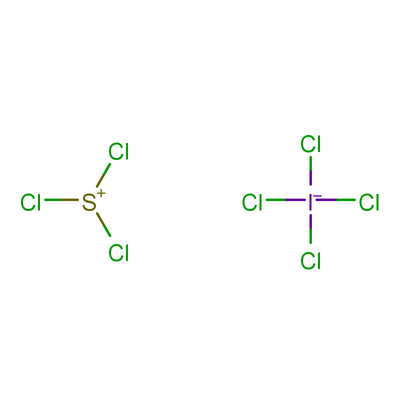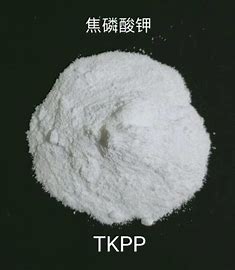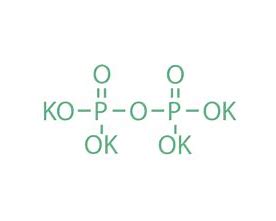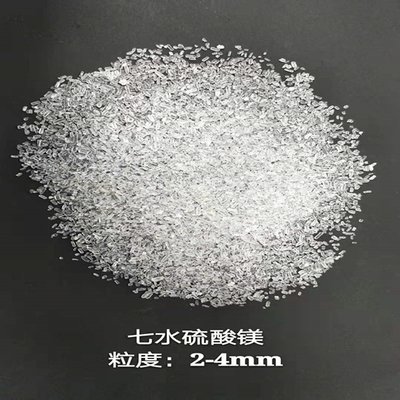Sulfur Dichloride (SCl₂)10545-99-0
I. Overview of Basic Information
| Item | Details |
|---|---|
| Chinese Name | Sulfur Dichloride |
| English Name | sulfur dichloride |
| English Aliases | Sulphur Dichloride; sulfoxylic dichloride; sulfur(+2) tetrahydride cation dichloride |
| CAS Number | 10545 – 99 – 0 |
| EINECS Number | 234 – 129 – 0 |
| Chemical Formula | SCl₂ |
| Molecular Weight | 102.97 |
| Melting Point | -78℃ |
| Boiling Point | 59.6℃ (decomposition) |
| Appearance | Dark red or light red liquid |
| Density | 1.621g/cm³ |
| Water Solubility | Soluble in water with a violent reaction |
| System Numbers | CAS Number: 10545 – 99 – 0 MDL Number: MFCD00011445 EINECS Number: 234 – 129 – 0 |
II. Characteristics of Molecular Structure
The molecular structure of sulfur dichloride determines its unique chemical properties. From the relevant data, its molar refraction is 19.74, molar volume (m³/mol) is 65.2, parachor (90.2K) reaches 159.6, surface tension (dyne/cm) is 35.8, and polarizability (10⁻²⁴cm³) is 7.82. These parameters collectively reflect the spatial configuration and electron distribution characteristics of the sulfur dichloride molecule, providing a basis for understanding its chemical behavior.
III. Physical Property Data

| Physical Property | Details |
|---|---|
| Appearance | Red – brown liquid with a pungent odor |
| Melting Point (℃) | -78 |
| Boiling Point (℃) | 60 (decomposition) |
| Relative Density (water = 1) | 1.64 |
| Relative Vapor Density (air = 1) | 3.55 |
| Saturated Vapor Pressure (kPa) | 22.66 (20℃) |
| Critical Pressure (MPa) | 6.68 |
| Flash Point (℃) | 118 (OC) |
| Ignition Temperature (℃) | 234 |
| Solubility | Soluble in hexane, carbon tetrachloride, benzene |
IV. Storage Method Essentials
When storing sulfur dichloride, strict norms need to be followed to ensure safety:
- Environmental Requirements: Store in a cool, dry, and well – ventilated warehouse, away from ignition sources and heat sources. The warehouse temperature should not exceed 30℃, and the relative humidity should not exceed 80%.
- Container Management: Keep the container sealed to prevent leakage and volatilization.
- Separate Storage: Store separately from oxidants, alkalis, active metal powders, etc., to avoid chemical reactions, and never store them together.
- Emergency Preparedness: The storage area should be equipped with leakage emergency treatment equipment and suitable containment materials to deal with emergencies.
V. Introduction to Synthesis Methods
- Industrial Synthesis Method: Add sulfur monochloride to a jacketed reactor, heat it by introducing steam, and simultaneously introduce chlorine gas for the chlorination reaction. In the later stage of the reaction, the temperature needs to be controlled below 40℃ to obtain the crude sulfur dichloride. Subsequently, mix the crude product with a certain amount of phosphorus trichloride stabilizer, pass it through a rotameter and a preheater into the first distillation column. The generated vapor is sent to the second distillation column through the top – tower condensation system and the intermediate cooler. Chlorine gas is removed by distillation, and the sulfur dichloride product with a purity of 98% – 99% can be obtained at the bottom of the tower. The reaction equation is: S₂Cl₂ + Cl₂ → 2SCl₂.
- Laboratory Preparation Method: Install a reflux condenser with a gas outlet tube, a gas inlet tube, and a thermometer on a 1 – liter ground – glass round – bottom flask. Add 200 grams of coarsely crushed rod – shaped sulfur to the flask. Pass thoroughly dried chlorine gas into the sulfur until the substance in the flask completely turns into a liquid, forming crude sulfur monochloride. At this time, add 0.1 gram of iron powder or anhydrous ferric chloride or ferrous chloride, continue to pass chlorine for about half an hour, and immerse the flask in water to slowly cool the reaction mixture to 20℃. The resulting liquid contains sulfur dichloride, as well as sulfur monochloride and chlorine. Let it stand for 1 hour, then add 2 milliliters of phosphorus trichloride, distill it using a small fractionating column, and collect the intermediate fraction at 55 – 62℃ in a receiver containing a few drops of phosphorus trichloride. Distill it again to obtain pure sulfur dichloride with a yield of approximately 70%.
VI. Main Application Areas
Sulfur dichloride plays an important role in multiple industries:
- Organic Synthesis Field: As a chlorinating agent in organic synthesis, it is used to manufacture acid anhydrides or organic acid chlorides, promoting various organic reactions and facilitating the synthesis of complex organic compounds.
- Industrial Lubrication Field: It can be used as a high – pressure lubricant and added to cutting oils to improve the lubrication performance of the oil, reduce the wear of mechanical parts, and extend the service life of equipment.
- Oil Processing Field: In the oil industry, it is used to process vegetable oils such as corn oil, cottonseed oil, and soybean oil, serving as an important processing agent.
- Disinfection and Sterilization Field: It has disinfection and sterilization functions and can be used for the disinfection of the environment and items in specific scenarios.
VII. Safety and Environmental Data
Toxicological Data
| Item | Details |
|---|---|
| Acute Toxicity | No data available |
| Irritation | No data available |
| Subacute and Chronic Toxicity | When rats were exposed to 100mg/m³ of this substance in the air for 6 hours a day for 8 times, they showed weakness, eye and nose irritation, dyspnea, weight loss. Autopsy showed normal internal organs |
Ecological Data
| Item | Details |
|---|---|
| Ecotoxicity | No data available |
| Biodegradability | No data available |
| Abiotic Degradability | No data available |
Properties and Stability
- Chemical Stability: When heated above 40℃, partial decomposition begins; it hydrolyzes in the presence of water, liberating sulfur and forming polysulfuric acid and sulfuric acid; its chemical properties are similar to a mixture of sulfur monochloride and chlorine; it reacts with excess sulfur trioxide to form pyrosulfuryl chloride (S₂O₅Cl₂).
- Stability – related Descriptions:
- Stability: Stable.
- Incompatible Substances: Strong oxidants, strong alkalis, water, aluminum, ammonia, potassium, sodium.
- Conditions to Avoid: Moist air, heat.
- Polymerization Hazard: Does not polymerize.
- Decomposition Products: Hydrogen chloride, sulfur oxides.







